The outstanding specialties of Langhe
A visit to Langhe offers the tourist a great variety of emotions and authentic experiences.
Each village, even the smallest and loftiest, enchants with its historic architecture and its ancient stories. These stories are made up of characters, fighters, inventors and noble families who have impressed in their memory their commitment to defend this vast hilly territory and who have helped to make it known all over the world. But it is in Alba, the capital of Langhe, rather than these small hamlets, where the history of an important family was first being written down. The year was 1942 and Pietro Ferrero, after gaining experience in a patisserie in Turin, had the brilliant idea to open a laboratory in via Rattazzi, in Alba. Here were handcrafted sweets and delicacies, widely appreciated, especially those made with a product grown by farmers on the hills of Langhe: the hazelnut, the same hazelnut later protected by the label “IGP Trilobata Tonda Gentile delle Langhe”, a Protected Geographical Indication for the round shaped hazelnut which is cultivated in this area. In 1946, Pietro Ferrero invented the forerunner of Nutella: Pasta Gianduja or Giandujot, a cream with nuts wrapped in foil, easy to spread on bread, and sold at 15 Lire, Italian currency used at that time. The high quality of the product and the low cost favoured the great success of the cream which became, unexpectedly, very well known and widely consumed.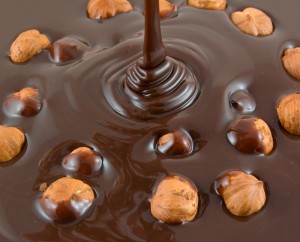 The adventure of the Ferrero family continued with the relocation and expansion of the offices in Via Vivaro: on May 14, 1946 the company “Ferrero” was officially established; the design of many other products have revolutionized the eating habits of adult consumers but, above all, children, proposing new snacks and especially focusing on original promotional forms, which have allowed the company to enjoy continuously growing success. In the 1950s, Ferrero opened its first plants abroad, first in Germany and then in Austria, Ireland, Ecuador and Australia, turning the family business into an International Group. The company is still present in Piazzale Ferrero in Alba, where it is easy to see a large sign bearing the famous family brand. Furthermore, the city is often softened by sweet aromas of roasted hazelnuts and chocolate. Roddi is the second leg of our journey in search of the top quality produce of Langhe: it is located on the right bank of the Tanaro River, just 5km from Alba. The village is home of the only “university” for dogs and hosts since 1880 a “school” for the training of dogs for the search of the precious Tuber Magnatum Pico, more commonly named truffle. The university was founded by a farmer from Roddi, Antonio Monchiero, nicknamed “Barot”. His son, Battista, carried on the family tradition and in the1950s, in the wake of the economic boom, the promotion of local food and truffles arrived overseas thanks to Giacomo Morra, important restaurateur of Alba. The truffle seeker, or “trifolao”, locates the truffles at night and makes use of a faithful friend, the dog, trained in the recognition of the aroma of this underground fungus. In Piedmont, the searching season begins on September 21st and continues until 31st January. Equally unique is the International Cooking School of the White Truffle of Alba, opened in 2012 within the premises of the castle built towards the end of the fourteenth century. The School represents an excellent opportunity for tourists who, guided by a chef, will learn the fundamentals of the local cuisine, especially those related to the truffle, to discover all the pairings.
The adventure of the Ferrero family continued with the relocation and expansion of the offices in Via Vivaro: on May 14, 1946 the company “Ferrero” was officially established; the design of many other products have revolutionized the eating habits of adult consumers but, above all, children, proposing new snacks and especially focusing on original promotional forms, which have allowed the company to enjoy continuously growing success. In the 1950s, Ferrero opened its first plants abroad, first in Germany and then in Austria, Ireland, Ecuador and Australia, turning the family business into an International Group. The company is still present in Piazzale Ferrero in Alba, where it is easy to see a large sign bearing the famous family brand. Furthermore, the city is often softened by sweet aromas of roasted hazelnuts and chocolate. Roddi is the second leg of our journey in search of the top quality produce of Langhe: it is located on the right bank of the Tanaro River, just 5km from Alba. The village is home of the only “university” for dogs and hosts since 1880 a “school” for the training of dogs for the search of the precious Tuber Magnatum Pico, more commonly named truffle. The university was founded by a farmer from Roddi, Antonio Monchiero, nicknamed “Barot”. His son, Battista, carried on the family tradition and in the1950s, in the wake of the economic boom, the promotion of local food and truffles arrived overseas thanks to Giacomo Morra, important restaurateur of Alba. The truffle seeker, or “trifolao”, locates the truffles at night and makes use of a faithful friend, the dog, trained in the recognition of the aroma of this underground fungus. In Piedmont, the searching season begins on September 21st and continues until 31st January. Equally unique is the International Cooking School of the White Truffle of Alba, opened in 2012 within the premises of the castle built towards the end of the fourteenth century. The School represents an excellent opportunity for tourists who, guided by a chef, will learn the fundamentals of the local cuisine, especially those related to the truffle, to discover all the pairings.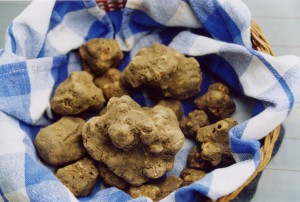 Continuing the theme of delicacies, we recommend that you continue the tour through Langhe with a visit to the beautiful city of Cherasco: founded in 1243, it is a real gem of architecture, art and history with its historic buildings, the Visconti castle, the Jewish ghetto and the precious churches. The oldest of the old town is the church of St. Peter, built during the thirteenth century with the reuse of materials from the ancient settlement of Manzano, which no longer exists today. To these are added other artefacts which have adorned the facade: tombstones and funerary sculptures from the thriving Roman city Pollentia (now Pollenzo, a hamlet of the town of Bra) and green and blue ceramic washbasins of the Romanesque period. We suggest taking a walk through the town centre, along the medieval arcades, to admire the precious palaces, the arch of Porta Narzole and Arco del Belvedere.
Continuing the theme of delicacies, we recommend that you continue the tour through Langhe with a visit to the beautiful city of Cherasco: founded in 1243, it is a real gem of architecture, art and history with its historic buildings, the Visconti castle, the Jewish ghetto and the precious churches. The oldest of the old town is the church of St. Peter, built during the thirteenth century with the reuse of materials from the ancient settlement of Manzano, which no longer exists today. To these are added other artefacts which have adorned the facade: tombstones and funerary sculptures from the thriving Roman city Pollentia (now Pollenzo, a hamlet of the town of Bra) and green and blue ceramic washbasins of the Romanesque period. We suggest taking a walk through the town centre, along the medieval arcades, to admire the precious palaces, the arch of Porta Narzole and Arco del Belvedere.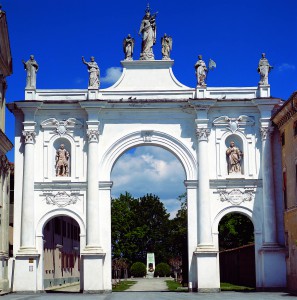 You will easily find craft shops and historical premises displaying tempting sweets called “Baci di Cherasco“: crispy and irregularly shaped sweets, where the dark chocolate wraps the round toasted and fragmented Langhe hazelnuts. These particular pralines were born in the late nineteenth century thanks to a young confectioner of Cherasco who, after going to Turin to learn the craft, returned and opened a confectionery shop. Every corner tells the ancient history of this city: Salmatoris Palace brings us back to 1631 when here the pact ending the fighting between the Duchy of Mantua and the Duchy of Savoy was signed; in 1706, the beautiful frescoed rooms housed the Holy Shroud while, in 1796, during the first Italian Campaign, Napoleon stayed in Palazzo Salmatoris. Every year, the city of Cherasco organizes the reenactment of the Armistice between Napoleon and Victor Amadeus III of Sardinia: to relive the atmosphere of the time, 400 soldiers parade with uniforms and weapons accurate to that historical period. Do not miss the Sunday markets dedicated to antiques and, in September, the Food Festival which celebrates the snail; Cherasco, in fact, is the seat of Istituto Internazionale di Elicicoltura, the International Institute of Snail Farming.
You will easily find craft shops and historical premises displaying tempting sweets called “Baci di Cherasco“: crispy and irregularly shaped sweets, where the dark chocolate wraps the round toasted and fragmented Langhe hazelnuts. These particular pralines were born in the late nineteenth century thanks to a young confectioner of Cherasco who, after going to Turin to learn the craft, returned and opened a confectionery shop. Every corner tells the ancient history of this city: Salmatoris Palace brings us back to 1631 when here the pact ending the fighting between the Duchy of Mantua and the Duchy of Savoy was signed; in 1706, the beautiful frescoed rooms housed the Holy Shroud while, in 1796, during the first Italian Campaign, Napoleon stayed in Palazzo Salmatoris. Every year, the city of Cherasco organizes the reenactment of the Armistice between Napoleon and Victor Amadeus III of Sardinia: to relive the atmosphere of the time, 400 soldiers parade with uniforms and weapons accurate to that historical period. Do not miss the Sunday markets dedicated to antiques and, in September, the Food Festival which celebrates the snail; Cherasco, in fact, is the seat of Istituto Internazionale di Elicicoltura, the International Institute of Snail Farming.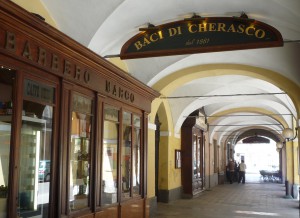 Dogliani is the main town of south-western Langhe, here the DOCG Dolcetto of Dogliani is produced and since the 1970s, the historical and archaeological museum Giuseppe Gabetti has hosted important displays from prehistoric to Roman times. The route through the musem consists of four rooms starting with a paleontological section, then the prehistoric era, the protohistoric era and finally the phase of Romanization (first century BC) up to the early Roman Empire (AD). In order to celebrate the most distinguished citizens of Dogliani, in 2011 it was inaugurated and the museum was dedicated to Luigi Einaudi, authoritative President of the Italian Republic (1948-1955) who worked in favour of the unification of Italy and helped make Dogliani known internationally.
Dogliani is the main town of south-western Langhe, here the DOCG Dolcetto of Dogliani is produced and since the 1970s, the historical and archaeological museum Giuseppe Gabetti has hosted important displays from prehistoric to Roman times. The route through the musem consists of four rooms starting with a paleontological section, then the prehistoric era, the protohistoric era and finally the phase of Romanization (first century BC) up to the early Roman Empire (AD). In order to celebrate the most distinguished citizens of Dogliani, in 2011 it was inaugurated and the museum was dedicated to Luigi Einaudi, authoritative President of the Italian Republic (1948-1955) who worked in favour of the unification of Italy and helped make Dogliani known internationally.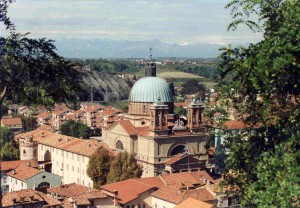 The Dogliani graveyard, interesting architectural example of the artist Giovanni Battista Schellino, “the Gaudi of Langhe”, hosts the tomb of the Einaudi family. In Autumn, the village organizes a delicious gastronomic event which has its roots in the tradition of peasant cooking of Langa: in 1600, during the Fair of the Saints, the Confraternity of the Flagellants used to offer the devotees a bowl of Cisrà, traditional hot soup made from tripe and chickpeas.
The Dogliani graveyard, interesting architectural example of the artist Giovanni Battista Schellino, “the Gaudi of Langhe”, hosts the tomb of the Einaudi family. In Autumn, the village organizes a delicious gastronomic event which has its roots in the tradition of peasant cooking of Langa: in 1600, during the Fair of the Saints, the Confraternity of the Flagellants used to offer the devotees a bowl of Cisrà, traditional hot soup made from tripe and chickpeas.
Wine Cellars Along the Itinerary
Bottega del Vino Dogliani
, P.zza San Paolo, 9, Dogliani CNTenuta Baràc
, Frazione San Rocco Seno D’Elvio 40, Alba CNPoderi Colla
, San Rocco Seno d’Elvio 82, Alba CNPoderi Luigi Einaudi
, Borgata Gombe, 31, Dogliani CNMarziano Abbona
, Borgata San Luigi 40, Dogliani CNOlivero Mario
, Via Fontanassa, 18, Roddi CNCadia
, Strada Roddi – Verduno, 58, Roddi CNPlaces to Eat Along the Itinerary
Hotel Restaurant I Castelli
, C.so Torino 14, Alba CNLa Crota – restaurant and guesthouse
, Via Fontana, 7, Roddi CNAccommodation Along the Itinerary
Tenuta Baràc
, Frazione San Rocco Seno D’Elvio 40, Alba CNHotel Restaurant I Castelli
, C.so Torino 14, Alba CNHotel Langhe
, Strada Profonda, 21, Alba CNPoderi Luigi Einaudi
, Borgata Gombe, 31, Dogliani CNLa Crota – restaurant and guesthouse
, Via Fontana, 7, Roddi CN




